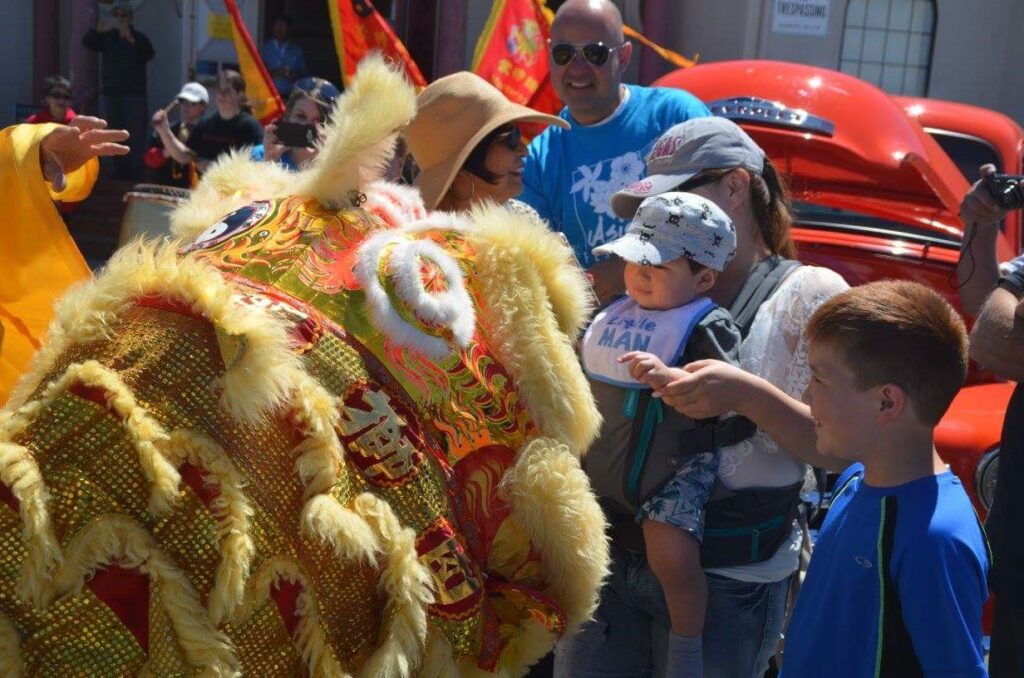
On May 3rd, we held the official opening for our Stories of Chinatown exhibit at the Historic Harvey House education center (at the Salinas Train Station) in Salinas. We had a wonderful time chatting with guests about Chinatown’s history. The exhibit will be open every Saturday 10 a.m. to 3 p.m. and every First Friday of each month through May, June, and July, 5 to 8 p.m. We will be open this Saturday, May 18, for Salinas Founders Day, and our docents will be available to discuss the exhibit with visitors.

This ACE exhibit was created in partnership with the Historic Harvey House Education Center, CSUMB Service Learning Institute, and CSUMB’s Archaeology program of the School of Social, Behavioral, & Global Studies, and The Community Foundation for Monterey County. We thank Deborah Silguero for her curation of this process, Larry Smith for both his historical and practical knowledge, and Harvey House Board members for their support.
ACE members emeriti Wally Ahtye, Wellington Lee, and Al Baguio contributed their historical knowledge, memories, and many historical images, along with the ACE project team, consisting of both Board and regular members. Alex Fabros, Jr. (a FANHS member) also contributed text and photographs. Organizations such as the Chinese Association of Salinas, the Buddhist Temple of Salinas, the local branch of the Filipino American National Historical Society, and the Filipino Community Center of Salinas Valley also contributed to the project.








Profs. Ruben Mendoza and Jennifer Lucido and their students contributed greatly to the archaeological exhibit. Service Learning Institute students contributed their creative ideas and artistic skills to various parts of the exhibit.




“Stories of Chinatown” gave us a chance to tell the larger story of Salinas Chinatown–actually two Chinatowns, the first founded in 1872, and the second in 1893–and to incorporate first-person narratives from residents and business owners in Chinatown.



Just as important, we were able to create curriculum materials and hands-on experiences for the 3rd- to 5th-grade primary school students who often tour the Harvey House with their classes. (Thanks to Kathleen Cata Fitzgerald for translating our curriculum materials into Spanish!) The exhibit also encouraged students to think about their own family histories and journeys. We will be posting more photos of the exhibit and its visitors, and hope you will come and visit Stories of Salinas Chinatown!





You must be logged in to post a comment.